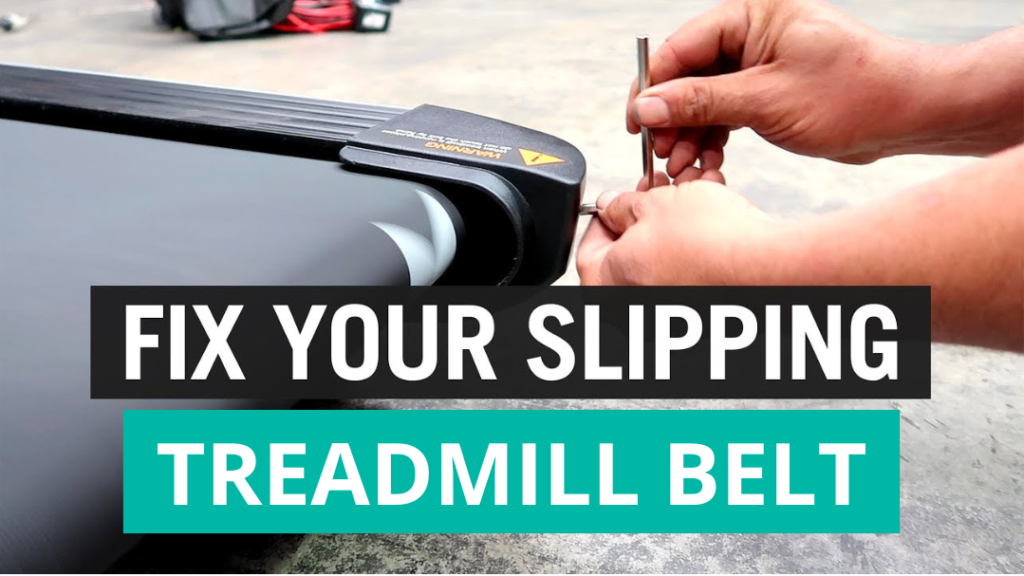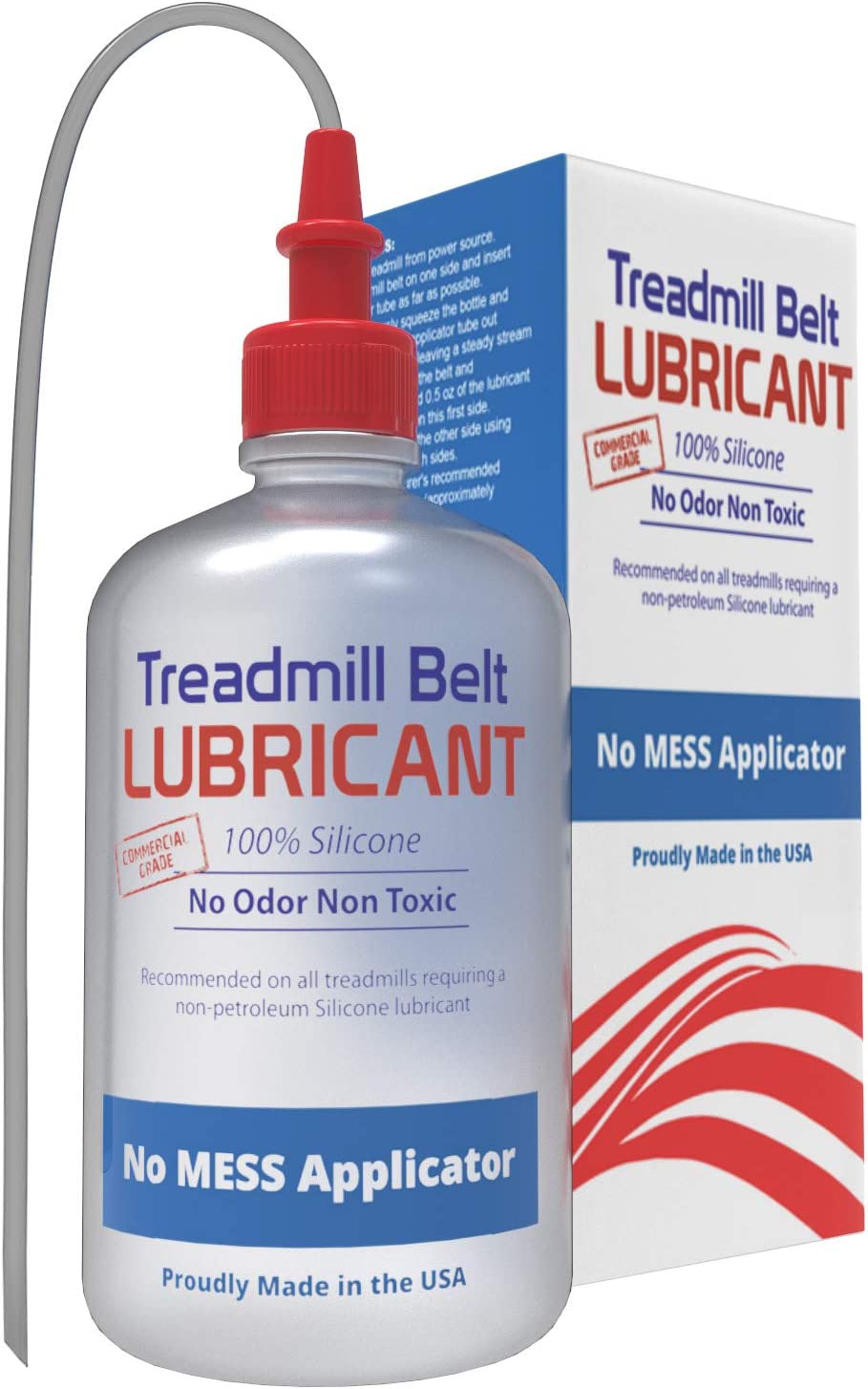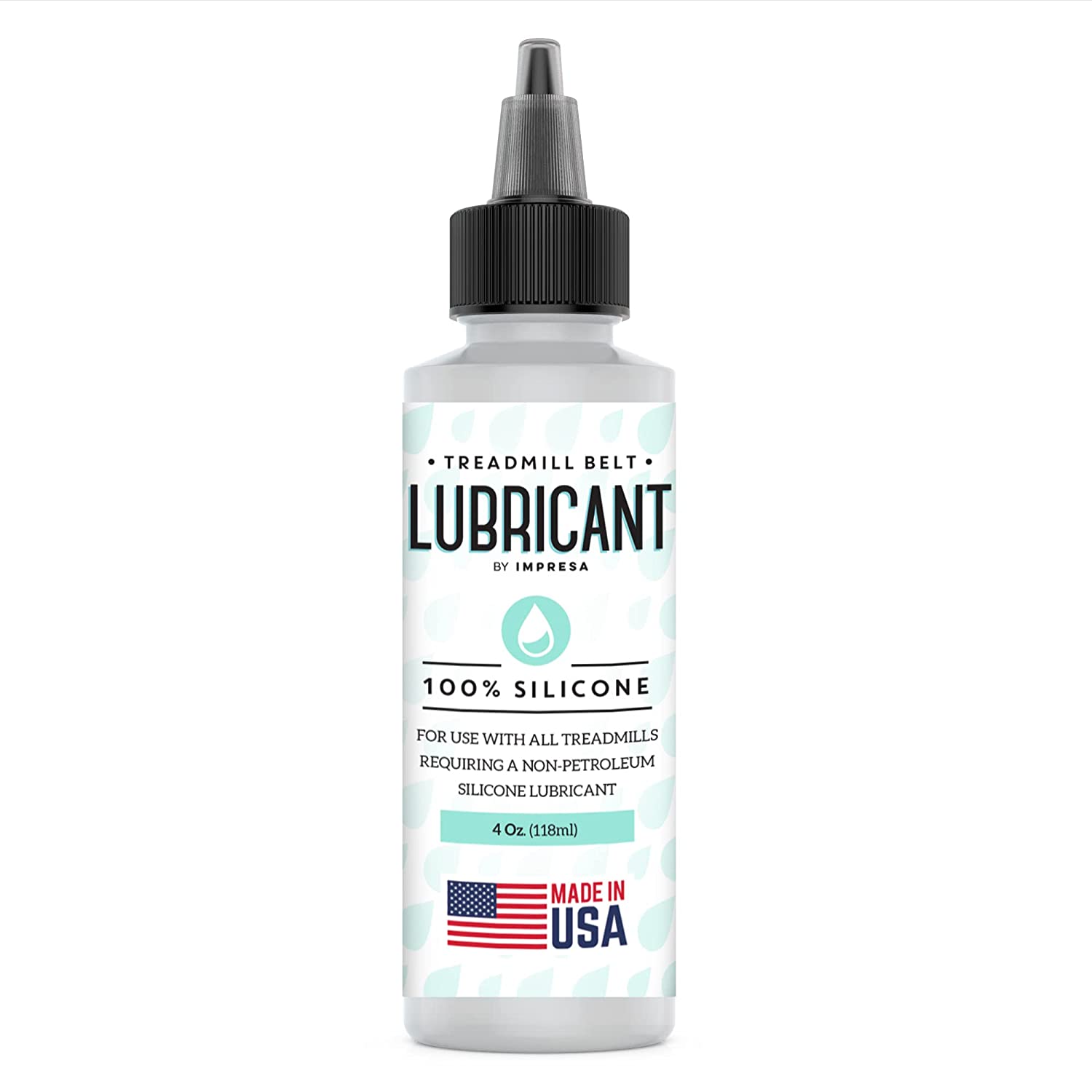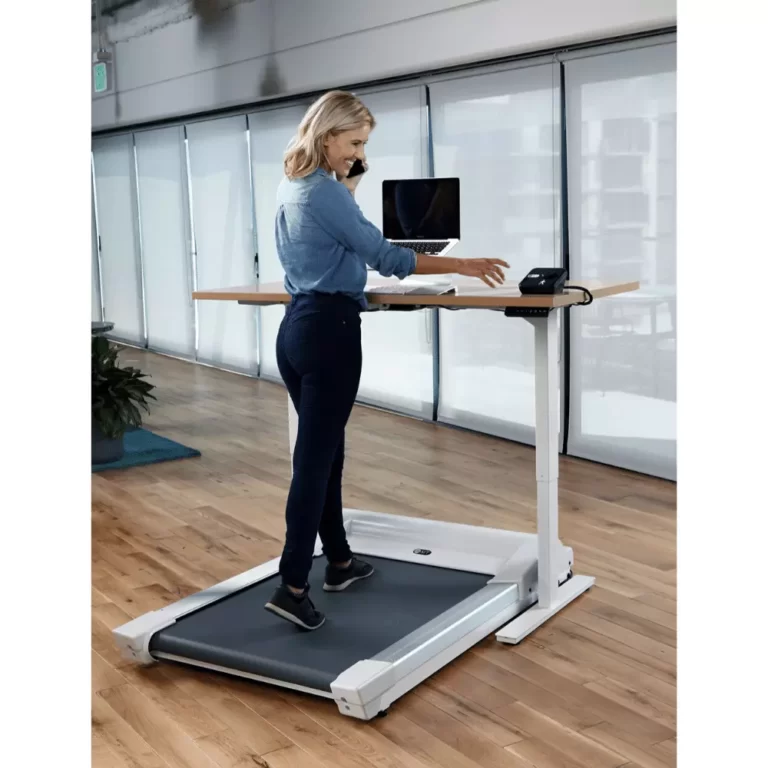An Easy-peasy Way to Fix the Slipping Treadmill Belt | Risk Free Options
“A monkey seldom slips on a banana peel” that’s true, and our blog is aimed at making you THE MONKEY of your TREADMILL JOURNEY.
Treadmills are a popular piece of exercise equipment for people who want to stay active and healthy, but sometimes the belt that drives the treadmill can start to slip or drag. This can be frustrating and even dangerous, as you are skating on thin ice. It can make it difficult to get a good workout or even cause you to fall off the treadmill.
You might have heard this oft-quoted great saying of Ken Pirot:
“Part of the journey in life is slipping and falling along the way; in these times, true friends are the ones who pick you up and dust you off.”
And we are your true friends in this treadmill journey, so we are here to dust you off if you’ve just fallen off the deck due to a slipping belt.

How it feels like when my treadmill belt is slipping to one side?
If your treadmill belt is slipping to one side, it can be a disorienting and potentially dangerous experience. You may feel like you are losing your balance or that the belt is unexpectedly moving underneath you. It can be difficult to maintain your pace or to feel steady and secure on the treadmill.
In some cases, a slipping treadmill belt may cause you to stumble or fall off the treadmill, which can result in bruises, scrapes, or other injuries. It’s important to stop using the treadmill immediately if you notice the belt slipping to one side, as this could indicate a problem with the treadmill that needs to be addressed.
There are a few different reasons why a treadmill belt might start to slip, and fortunately, there are also a number of ways to fix the problem. In this article, we’ll go over some common causes of a slipping treadmill belt and how to troubleshoot and fix them.
Possible causes of a slipping treadmill belt:
1. The belt is too loose:
If the belt is too loose, it can start to slip or drag on the treadmill’s deck. This can be caused by a variety of factors, including wear and tear on the belt, the belt being improperly installed, or the tension on the belt being incorrectly adjusted.
2. The belt is too dry:
If the belt is too dry, it can also start to slip or drag on the treadmill’s deck. This can be caused by a lack of lubrication or by the belt being exposed to heat or other elements that can dry it out.
3. The deck is worn or damaged:
If the treadmill’s deck is worn or damaged, it can cause the belt to slip or drag. This can be caused by normal wear and tear, or by heavy or improper use of the treadmill.
4. The motor or drive belt is worn or damaged:
If the treadmill’s motor or drive belt is worn or damaged, it can cause the belt to slip or drag. This can be caused by normal wear and tear, or by heavy or improper use of the treadmill.
5. The treadmill is not level:
If the treadmill is not level, it can cause the belt to slip or drag. This can be caused by the treadmill being placed on an uneven surface, or by the treadmill’s leveling feet not being properly adjusted.
Steps on how to fix a slipping treadmill belt
1. Check the belt tension

Proper belt tension is much important for the comfort and effectiveness of a treadmill workout. If the belt is too loose, it can be harder to maintain a consistent pace and may cause the user to feel unsteady or unbalanced. On the other hand, if the belt is too tight, it can be more difficult to run or walk and may cause discomfort or strain on the joints.
The first thing you’ll want to do is check the tension on the belt. If the belt is too loose, you’ll need to tighten it to fix the slipping treadmill belt. To do this, you’ll need to locate the belt tension adjustment screws on the treadmill. These are usually located near the front or rear of the treadmill, and they may be covered by a plastic cap or shield.
To tighten the belt, use a Phillips head screwdriver to turn the adjustment screws clockwise. You’ll want to turn the screws a little at a time and test the belt to see if it is still slipping. It’s important not to over-tighten the belt, as this can cause it to stretch and wear out more quickly.
2. Lubricate the belt:

Lubrication of a treadmill is necessary because it helps to reduce friction and wear on the belt, deck, and other moving parts of the treadmill. Without proper lubrication, these parts can wear down or become damaged over time, leading to problems like a slipping belt or other issues with the treadmill’s performance.
Lubrication can also improve the overall efficiency of the treadmill, as it makes it easier for the belt to move and the motor to run. This can result in a more comfortable and effective workout for the user.
Treadmill lubrication is typically recommended every six months to a year, depending on the model and the amount of use it gets. Some treadmills come with a built-in lubrication system that automatically applies lubricant to the belt, while others require manual lubrication using a treadmill lubrication kit.
Sometimes, you may see that the treadmill belt is still slipping even after its lubrication. So it’s important to use the correct type of lubricant for your treadmill and follow the manufacturer’s instructions for lubrication to ensure it is done properly.
Using the wrong lubricant or not lubricating the treadmill enough can cause problems, while over-lubricating can also lead to issues. Remember that an over-lubricated treadmill belt may also cause it to get slippery. Before lubricating your treadmill, consider the choice of lubricant first.
There are some manufacturers who suggest using silicon-based lubes because they are very less likely to evaporate. However, you must consult your machine’s user manual or maintenance manual because they have sometimes mentioned some specific lubricants.
There are some treadmills which are labeled as “no maintenance machine” but don’t fall for these catchy claims and slogans. Approach a professional treadmill technician and ask him to examine your treadmill’s lubrication needs properly.
If the belt is too dry, you’ll need to lubricate it to fix the slipping problem. To do this, you’ll need to locate the belt lubrication port on the treadmill. This is usually located near the front or rear of the treadmill, and it may be covered by a plastic cap or shield.
To lubricate the belt, remove the cap or shield and spread a thin layer of lubricant on it with a treadmill lubrication kit. Make sure to follow the instructions that come with the lubrication kit. Different brands and models may have different rules about how much lubricant to use and how often to apply it.
3. Check the deck

If the deck of a treadmill is damaged, it can cause the belt to slip or drag, making it difficult to use the treadmill and even pose a safety risk. Here are some steps you can follow to fix a damaged treadmill deck:
1) Disconnect the treadmill from the power source: Before attempting to repair the treadmill, it’s important to ensure it is disconnected from the power source to prevent accidents or injuries.
2) Remove the belt: To access the deck, you’ll need to remove the belt from the treadmill. This can typically be done by removing the front and rear roller covers and loosening the belt tension. You may need to consult the treadmill’s user manual for specific instructions on how to do this, as it can vary depending on the model.
3) Inspect the deck: Once the belt has been removed, you can inspect the deck to see if it is damaged. You’ll need to replace the deck if you see cracks or other damage.
4) Get a New One: To replace the deck, you’ll need to order a new one from the treadmill’s manufacturer or a third-party supplier. You’ll also need to ensure you have the necessary tools and equipment to remove the old deck and install the new one, such as a screwdriver, a wrench, and a drill.
5) Replace the belt: Once the new deck is installed, you’ll need to replace the belt on the treadmill. Follow the instructions provided in the treadmill’s user manual for how to do this, as it can vary depending on the model.
6) Test the treadmill: After the belt has been replaced and the treadmill has been reassembled, it’s a good idea to test it to make sure it is working properly. Start the treadmill slowly and ensure the belt is running smoothly without slipping or dragging.
If you are not comfortable repairing the treadmill yourself, it may be best to seek the help of a professional or to contact the manufacturer for assistance. Treadmills can be complex machines, and attempting to fix them without the proper knowledge or tools can be dangerous.
Below are some of the best lubricants for treadmill belt.
Treadmill Belt Lubricant | 100% Silicone | USA Made | No Odor & No Propellants | Applicator Tube for Full Belt

- The treadmill belt lubricant can be used on all brands of treadmills, besides regular use minimizes friction between the belt and the deck.
- The lubricant applies easily, thus you don’t need to loosen your belt, instead, you can apply it directly to the relevant places by using the applicator tube that conveniently slides under the belt and releases a uniform stream.
- The lubricant is scentless, non-toxic, and will keep your treadmill running smoothly all year long.
Treadeez GSM Brands Treadmill Belt Lubricant

- Treadeez treadmill lubricant has been specially formulated to help reduce friction between the treadmill belt and deck, it can also be used between the elliptical machine wheel and track.
- The lubricant comes in an easy to squeeze bottle, has an easy twist-off cap and a precision spout that conveniently disperses the lubricant under the belt.
- The lubricant is non-toxic and odorless and effectively reduces aggravating noise while encouraging a smooth treadmill belt ride.
IPO Multi-Purpose Lubricant(4oz Bottle) Treadmill Lube 100% Pure Silicone

- Ipo multi-purpose lubricant will remain stable even when exposed to environments with higher temperatures.
- The lubricant features a convenient applicator that effectively delivers lubricant between the belt and deck, thus you don’t have to loosen the belt.
- The lubricant is characteristic clear thus does not stain, and can, therefore, be used for pour painting.
- The lubricant is non-toxic thus safe for use, it is also safe for the environment and will protect and elongate the life span of your treadmill.
IMPRESA 100% Silicone Treadmill Lubricant / Treadmill Lube

- Impressa products 100% silicone treadmill belt lubricant is versatile and can be used on a wide variety of treadmills be it commercial, personal, or folding treadmills.
- Once applied the lubricant will ensure that your machine runs smoothly and remains quiet even when engaging in the most intense workouts.
- Impressa products 100% silicone obliterates the need for repairs and extends the life of the motor of the treadmill. The lubricant is also compatible with all the brands available in the market.
FAQs
Q.1 Does treadmill belt slips at higher speed?
It is possible for a treadmill belt to slip at higher speeds, especially if the belt is loose, dry, or damaged. If the belt is not tightened properly or is not properly lubricated, it may start to slip or drag on the treadmill’s deck as the speed increases. This can make it difficult to maintain a consistent pace and even pose a safety risk if the belt slips too much.
Q.2 How to center a treadmill belt?
You’ll need an Allen key that fits in the treadmill’s rear roller bolts to center the belt. Check for gaps between the rear roller and the end of the belt by starting the treadmill at the lowest setting. It is best if the spacing is as equal as possible. However, the gap is often smaller, and vice versa, if the treadmill belt moves in the other direction or is out of alignment.
Use the left bolt on the back end to correct the alignment once you’ve located the problem area. Tighten it by rotating the left bolt clockwise if the gap between the roller and the belt is narrower on the left side. On the other hand, loosen the left bolt by rotating it counterclockwise if the gap is less on the right side.
Turn the lefty bolt gently and in intervals of 1/4 turn while ensuring that the belt is centered. Please wait for 10 to 20 seconds after making each turn for it to take effect. Turn the bolt against it until the alignment is correct if the space between the roller and the belt is still uneven.
Conclusion
In conclusion, if your treadmill belt is slipping or dragging, it can be proved something like perilous and precarious. There are a few different causes of a slipping treadmill belt, including a loose belt, a dry belt, a worn or damaged deck, a worn or damaged motor or drive belt, or an uneven treadmill.
To fix a slipping treadmill belt, you’ll need to check the belt tension, lubricate the belt, inspect the deck, replace the deck if necessary, replace the belt, and test the treadmill to make sure it is running smoothly.
Taking good care of your treadmill is important for your own safety and the longevity of the machine. By following these steps and regularly checking and maintaining your treadmill, you can ensure that it is running smoothly and safely for your workouts.




